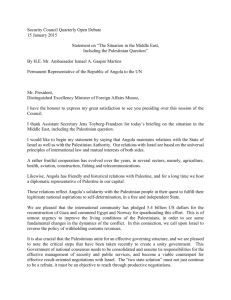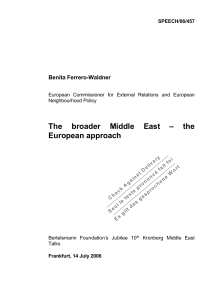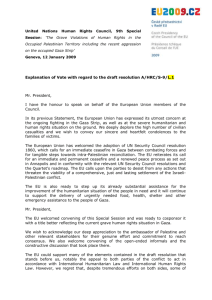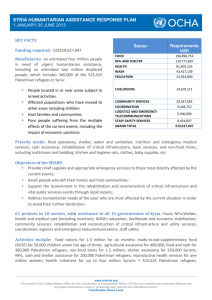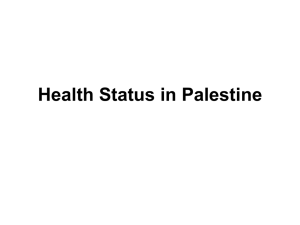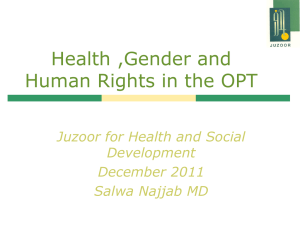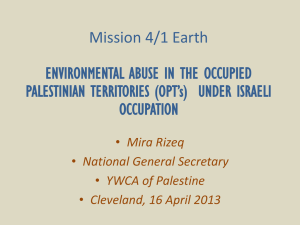Ishmayo Gregory
advertisement
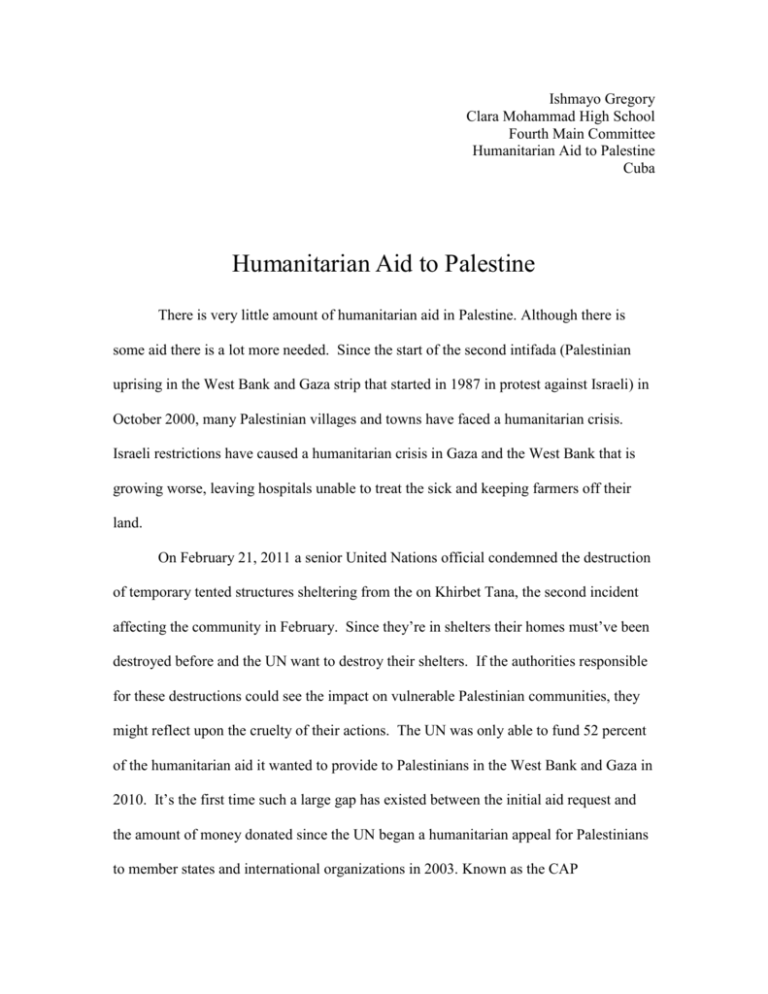
Ishmayo Gregory Clara Mohammad High School Fourth Main Committee Humanitarian Aid to Palestine Cuba Humanitarian Aid to Palestine There is very little amount of humanitarian aid in Palestine. Although there is some aid there is a lot more needed. Since the start of the second intifada (Palestinian uprising in the West Bank and Gaza strip that started in 1987 in protest against Israeli) in October 2000, many Palestinian villages and towns have faced a humanitarian crisis. Israeli restrictions have caused a humanitarian crisis in Gaza and the West Bank that is growing worse, leaving hospitals unable to treat the sick and keeping farmers off their land. On February 21, 2011 a senior United Nations official condemned the destruction of temporary tented structures sheltering from the on Khirbet Tana, the second incident affecting the community in February. Since they’re in shelters their homes must’ve been destroyed before and the UN want to destroy their shelters. If the authorities responsible for these destructions could see the impact on vulnerable Palestinian communities, they might reflect upon the cruelty of their actions. The UN was only able to fund 52 percent of the humanitarian aid it wanted to provide to Palestinians in the West Bank and Gaza in 2010. It’s the first time such a large gap has existed between the initial aid request and the amount of money donated since the UN began a humanitarian appeal for Palestinians to member states and international organizations in 2003. Known as the CAP (Consolidated Appeals Process), the money raised is not part of the UN annual budget for the West Bank and the Gaza strip. The UN raised funds that met 79 percent of its humanitarian requests for Palestinians in 2009 and 75 percent in 2008. UN humanitarian coordinator for the occupied Palestinian territories, Maxwell Gaylard told reporters that the worldwide economic crisis as well as events in Pakistan and Haiti had contributed to the disappointing figures in 2010. The 2010 Palestinian appeal escalated $289.2 million, which when combined with unspent money from 2009 funded a total emergency humanitarian assistance budget of $312.7 million. $400.4 million have been appropriated for economic aid to the Palestinians and $100 million for support of PA police training, etc. for FY2010. The U.S. also provided just over $61.5 million (as of February 13, 2009) in emergency humanitarian aid through USAID, UNRWA, and the International Committee of the Red Cross following Israel's assault on Gaza. The U.S. has never provided Palestinians with military aid (although we have provided Palestinians with aid for policing their own people as well as with humanitarian and development assistance). The U.S. Agency for International Development (USAID) has provided the Palestinian people with some indirect economic assistance through funds distributed to U.S.-based NGOs operating in the West Bank and Gaza. According to the CRS report, "Funds are allocated in this program for projects in sectors such as humanitarian assistance, economic development, democratic reform, improving water access and other infrastructure, health care, education, and vocational training." In addition, some funding has occasionally been provided directly to the Fatah-led Palestinian Authority (PA) in an attempt to strengthen it against competing political parties (particularly Hamas) and for use in policing the Palestinian people. The United States also provides funding to the United Nations Relief and Works Agency for Palestine Refugees in the Near East (UNRWA), "which provides food, shelter, medical care, and education for many of the original refugees from the 1947-1949 Arab-Israeli war and their families—now comprising approximately 4.8 million Palestinians in Jordan, Syria, Lebanon, the West Bank, and Gaza.
